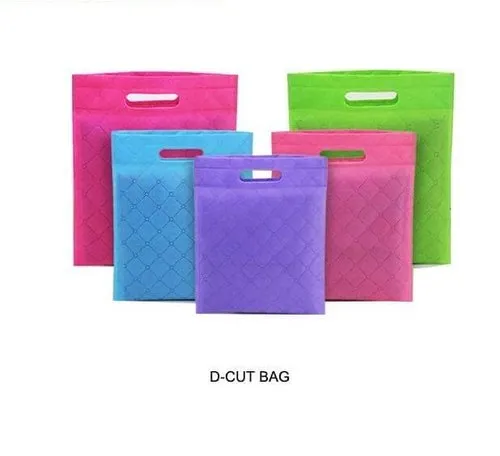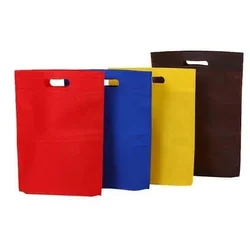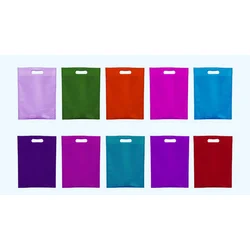BOPP Offset White Non Woven D Cut Bag, Capacity: 5 Kg
₹125.0
Product Specification
| Type | Shopping Bags |
| Material | Polypropylene |
| Usage/Application | Shopping, Grasory, Promotion |
| Color | White |
| Thickness | 70GSM |
| Capacity | 5 Kg |
| Packaging Type | Customize |
| Printing | Offset |
| Customize | Customize |
| Minimum Order Quantity | 100 Kg |
Product Description
Non Woven D Cut Bag for Shopping, Packageing
- Description
- Additional information
- Reviews (0)
- Q & A
- Sustainability Remark
- More Offers
- Store Policies
- Inquiries
| Color | White |
|---|---|
| Material | Polypropylene |
You must be logged in to post a review.
Q & A
The sustainability of eco-friendly carry bags can vary depending on various factors such as the materials used, manufacturing processes, usage patterns, and end-of-life disposal options. Here are some key points to consider regarding the sustainability of eco-friendly carry bags:
Material selection: Eco-friendly carry bags are typically made from renewable resources or recycled materials. Common options include organic cotton, jute, hemp, bamboo, paper, or biodegradable/compostable materials like PLA (polylactic acid) or starch-based plastics. The sustainability of the bag depends on the environmental impact associated with the production and disposal of these materials.
Manufacturing processes: The manufacturing processes used to produce eco-friendly carry bags can have varying degrees of environmental impact. Look for bags made with low-energy processes, minimal water usage, and reduced emissions. Additionally, consider whether any harmful chemicals or dyes were used during production.
Durability and reusability: The durability of eco-friendly carry bags is an important factor. Bags that are sturdy and designed for multiple uses can significantly reduce waste compared to single-use bags. Look for reinforced handles, double stitching, and strong materials that can withstand repeated use.
Disposal options: Proper end-of-life disposal is crucial for the sustainability of eco-friendly carry bags. Some bags are designed to be biodegradable or compostable, meaning they can break down naturally in the environment or in industrial composting facilities. However, it's important to note that not all bags labeled as "biodegradable" or "compostable" can break down effectively in all environments. It's essential to follow proper disposal guidelines and ensure the bags end up in the appropriate waste streams.
Consumer behavior: The sustainability of eco-friendly carry bags also depends on consumer behavior. Choosing reusable bags over single-use options and properly caring for and maintaining the bags can extend their lifespan and overall environmental impact.
Life cycle analysis: Conducting a life cycle analysis (LCA) can provide a comprehensive assessment of the environmental impact of eco-friendly carry bags. LCAs consider the entire life cycle of the bag, including raw material extraction, manufacturing, transportation, use, and disposal. It helps evaluate the overall sustainability and identify areas for improvement.
To determine the specific sustainability of a particular eco-friendly carry bag, it's best to look for certifications or labels such as Fairtrade, GOTS (Global Organic Textile Standard), or Cradle to Cradle. These certifications can provide assurance that the bag meets certain environmental and social standards.
General Inquiries
There are no inquiries yet.



















Reviews
There are no reviews yet.